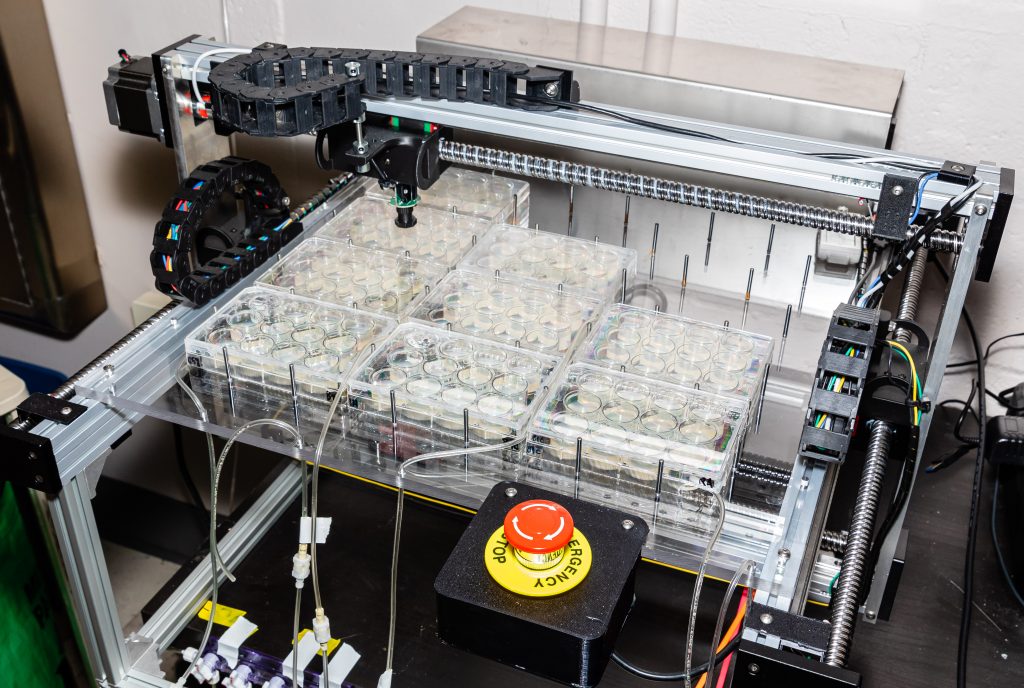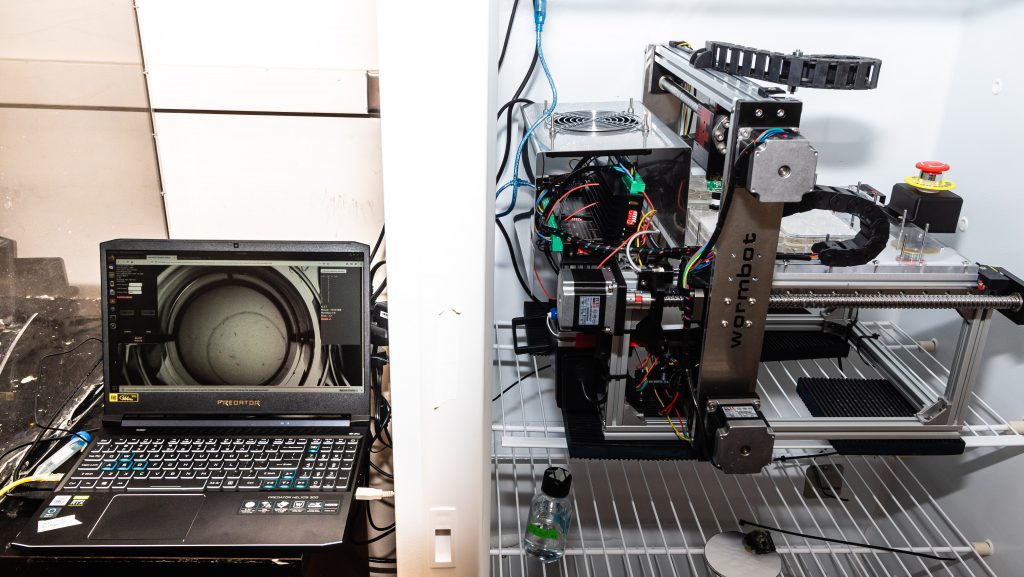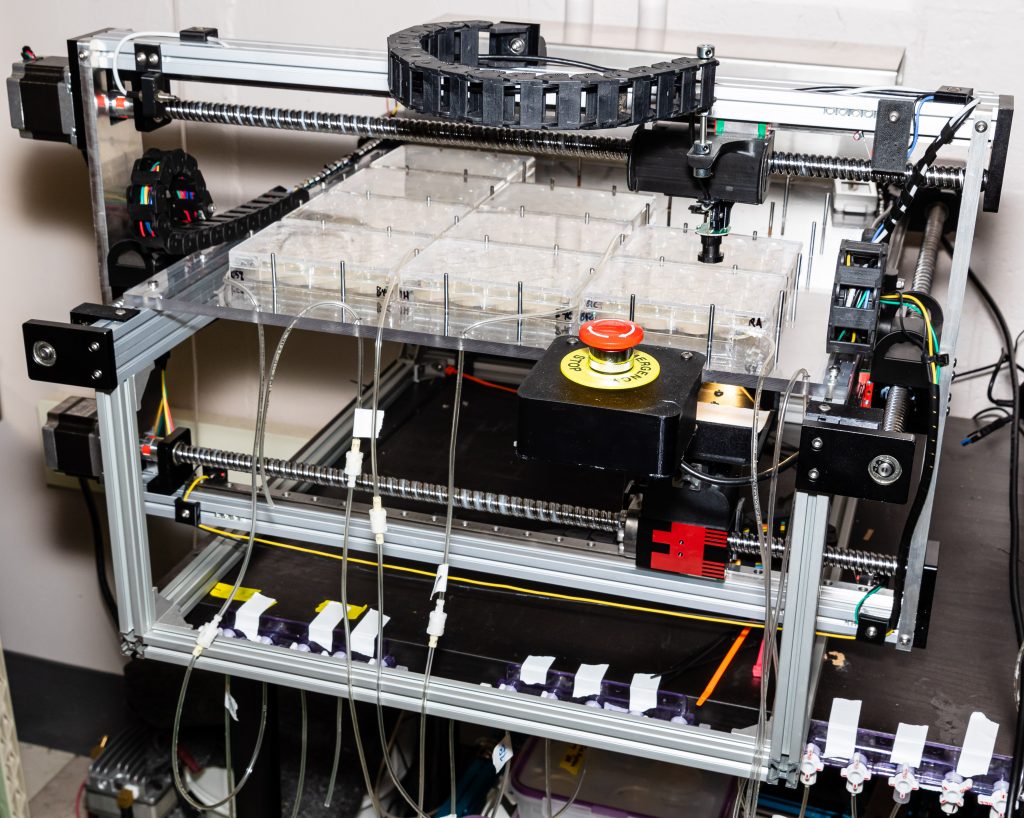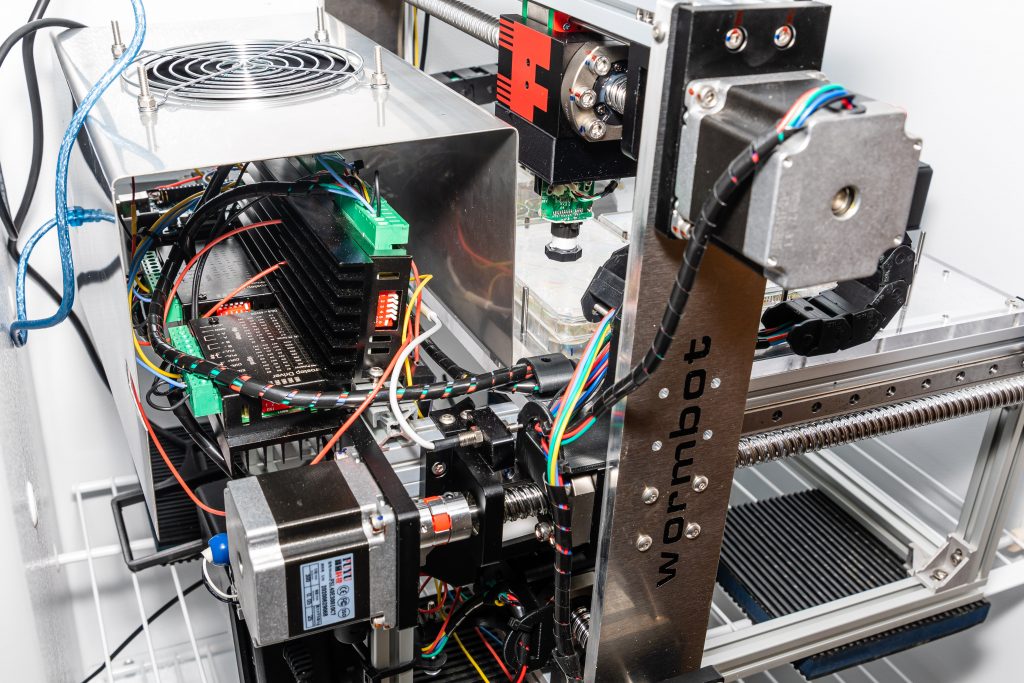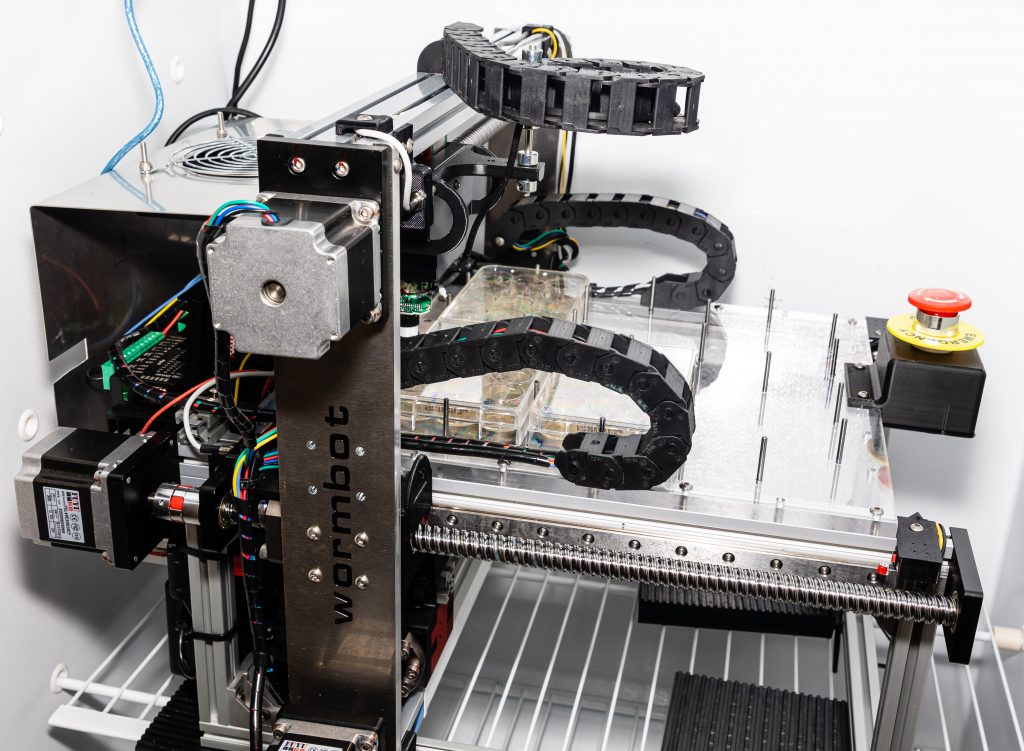The WormBot
An open-source robotics system for high-throughput lifespan and behavioral phenotyping in C. elegans.
Using a web-based interface, the WormBot enables fully autonomous data collection from hundreds of parallel experiments simultaneously. The automated lifespan scoring features of the WormBot software are able to differentiate between pharmacological, environmental, and genetic treatments known to increase and decrease lifespan, and are comparable to human collected and annotated lifespan and behavioral data, but at substantially reduced time and effort. In addition to quantifying mortality under standard conditions, the WormBot can easily resolve survival differences under toxic conditions such as hydrogen cyanide exposure and can be used to quantify healthspan metrics such as motility and response to stress.
The WormBot system saves researchers valuable resources, such as time and money, while protecting the integrity of data and improving speed to data collection.
- Time – laboratory automation increases throughput and data quality while decreasing cost. On average, we have found that using the WormBot to set up lifespan and behavior experiments requires less than 20% of the time required for traditional manual lifespan experiments and can easily be performed by undergraduate students with significantly less training required.
- Money – setting up individual plates and hundreds of hours of manual labor are replaced with a robotic system that automatically keeps track of each experiment and performs the analysis with minimal user input obviating the need for constant user input. Doing many experiments at once as opposed to setting up experiments in tandem is a more efficient way of doing science and using resources.
- Data integrity – science is in the midst of a reproducibility crisis. The causes of this crisis are multifactorial, but range from simple statistical errors, like inadequate sample size, to outright data fabrication. Systems like the WormBot that automatically create archival time-stamped digital observations that can easily be blinded, shared, and reexamined are an important tool in addressing this crisis. In this aspect, automation itself is also beneficial, as it is designed to be carried out by machines and is therefore necessarily more highly controlled owing to the limitations of these mechanical systems. Automation also allows for larger sample sizes, decreased experimenter bias, and fewer human errors during data collection. All of these factors point to laboratory automation tools like the WormBot revolutionizing the scale, rigor, and scope of science in the future.
WormBot History
The WormBot was originally conceived in the Kaeberlein lab for high-throughput screening of survival experiments. However, the flexible nature of the system was attractive to other users and we were encouraged to release it to the wider worm community. Instruction for constructing Version 1 of the system are available as open access. The current version 3 has improved capabilities, including incubation, image quality, and stability, and is available as a service through the Invertebrate Longevity and Healthspan Core.
The Core assists investigators throughout the research community in quantifying a variety of C. elegans longevity and healthspan measures. This is accomplished through direct collaboration, training and outreach, and the development and dissemination of new tools and technologies such as the WormBot.
The focus on worms allows us to provide services and technologies to a large number of external investigators and thereby have a correspondingly large impact. The data generated by this Core can often be correlated with high dimensional computational analyses and with the protein and metabolite phenotypes studied in the other Nathan Shock Center Cores. Invertebrate models are also highly accessible to junior investigators, and our Center pilot projects allow these investigators access to the full range of integrated services provided by the Center Resource Cores.
Services Available:
The following services are available to all users. Additional services may also be available and users are encouraged to contact the Core Director to discuss specific experimental details. Typical costs are provided below for initial budget preparation and may be used for Pilot Project submissions, but in all cases final costs will be determined following consultation with Core personnel.
Caenorhabditis elegans WormBot Assay capabilities
- WormBot assays. The Core will perform lifespan and healthspan assessments using the WormBot platform [1]. Cost: Estimated costs are $500 per plate. Each plate can accommodate 12 experiments of 20-30 animals per experiment.
- Healthspan measures.The Core will assay a variety of age-associated healthspan measures, including: motility, resistance to polyglutamine or amyloid beta toxicity, and reproductive capacity (brood size). Additional assays, including fluorescence reporter assays, may be available upon request. Cost:Cost will vary on a case-by-case basis, depending on services requested.
- Resistance/sensitivity to environmental or chemical stresses. The core will perform survival assays in the presence of different environmental or chemical stressors upon request. Cost:Cost will vary on a case-by-case basis, depending on services requested.
General and Other Services
WormBot System. The Core will assist other groups in establishing a WormBot system in their own lab. Cost is approximately $19,634 plus actual shipping and handling. A fully constructed and functional WormBot is shipped and support is provided to establish the operational system in the lab. Additional WormBot support is billed at $120/hr.
Literature Cited:
- Pitt, J.N., et al., WormBot, an open-source robotics platform for survival and behavior analysis in C. elegans. Geroscience, 2019. 41(6): p. 961-973.
Core Personnel:
The Core is led by Matt Kaeberlein, Maitreya Dunham, and Alex Mendenhall
